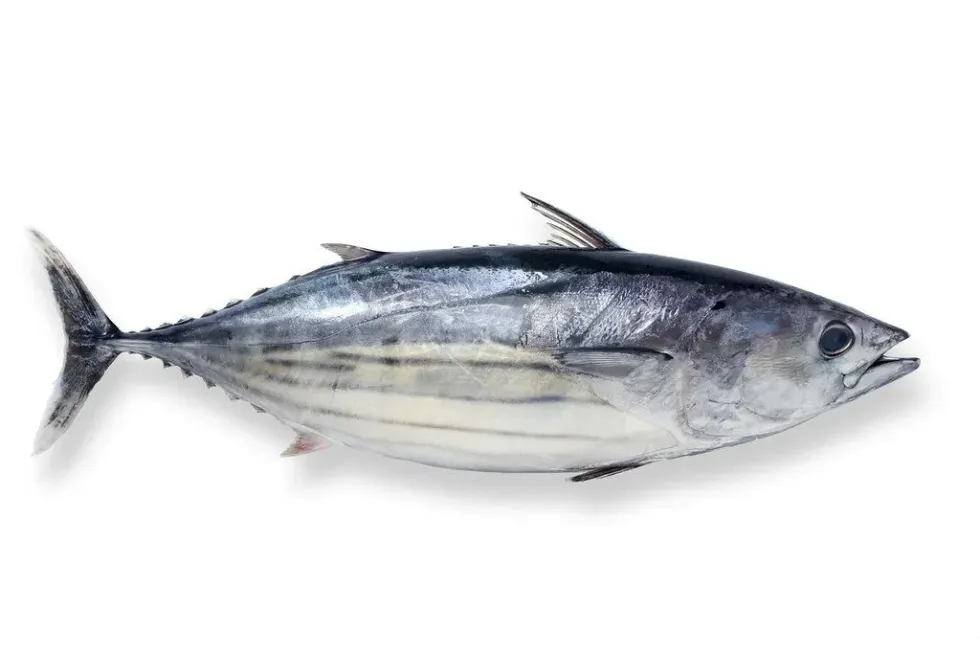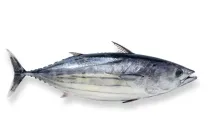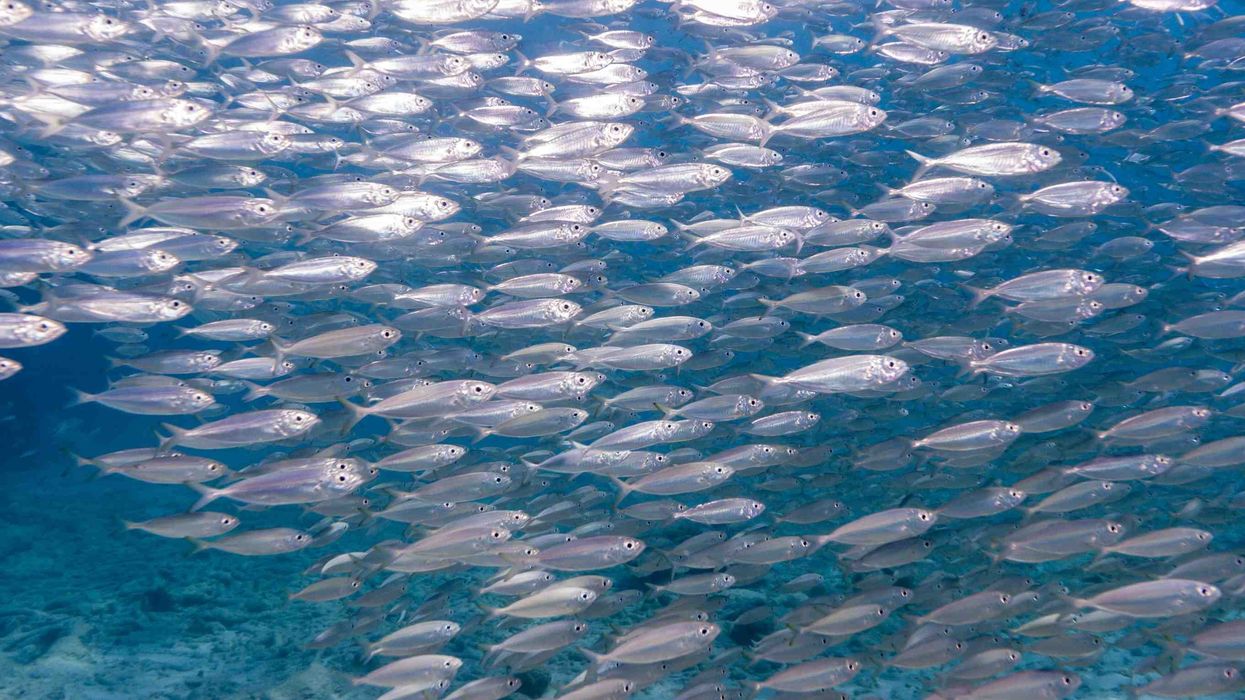Bonito fishes belong to the Animalia kingdom, under the class Actinopterygii and genus Sarda. They belong to the family Scombridae and are found in the Indo-Pacific region and Atlantic region.
The Scombridae family also contains tuna. They are predatory fishes that are found all over the world from Norway to South Africa.
They are widely spread over this region and are found in the Mediterranean and the Black Sea, and the northern Gulf of Mexico. They are also sometimes found from California to Peru while the Australian Bonito resides between Australia and New Zealand.
There are four main species of the Bonito family and they are named according to the region they are found in. These species are the Indo-Pacific, the Pacific, the Atlantic, and the Australian bonito.
The scientific names of the species are Sarda sarda of the Atlantic region, Sarda chiliensis of the Pacific, Sarda orientalis of the Indo-Pacific, and the Sarda australis of the Australian region.
There are many species of the Bonito like the Pacific Bonito, Atlantic Bonito. They are usually seen in big groups, and can also live with large fishes like dolphins and whales.
They can adjust to different habitats due to their traveling and migratory habits. Bonito is also used as bait. Read on to learn more about this species of fish.
If you find our content interesting and informative then check out swai fish and skate fish facts too.
Bonito Fish Interesting Facts
What type of animal is a Bonito Fish?
Bonito fish is an aquatic animal, namely a fish. Bonito sarda is closely related to the tuna and mackerel family and prey on smaller fish like sardine, anchovies, and also other invertebrates. The Atlantic bonito fish is more similar to the mackerel while the Pacific bonito fish is more similar to the tuna.
What class of animal does a Bonito Fish belong to?
Bonito is a fish that belongs to the Animalia kingdom under the Sarda genus. They are part of the Actinopterygii class.
Their scientific names differ based on where they live. They are known as Sarda sarda of the Atlantic Ocean and Mediterranean Ocean, Sarda chiliensis of the eastern Pacific Ocean, Sarda orientalis of the Indo-Pacific, and Sarda australis of New Zealand and Australia.
How many Bonito Fish are there in the world?
There are billions of Bonito fishes in the world as almost millions of eggs hatch during every spawning season each year. Bonito sarda can be found near the coast, bay, or harbor but are mainly fishes of the deep waters.
They may be used as bait for larger fishes during fishing. Although there are many of them, the bonito fishes are in danger of overfishing.
Where does a Bonito Fish live?
Bonito fishes are found in brackish salt waters, mainly in the ocean. They are found mostly in the middle of the ocean, not the bottom, and are known as pelagic species. Bonitos prefer a warmer temperature of 60 degrees but can survive in 50 degrees too.
What is a Bonito Fish's habitat?
Bonito fishes have different habitats due to their extensive traveling and migration. They live in a large school and prefer temperate and tropical waters and dive into deeper water during the day, or stay in shallow water at night.
While some of them prefer open water areas, others prefer the kelp forests found near the shore. Generally, the younger Bonito fishes are found near the shore, coast, bay, or harbors, while the larger adult Bonitos are found in the deeper sea with larger fish.
Who do Bonito Fish live with?
Bonitos generally live together in large schools. The male bonitos manage the different schools as they can dive into deeper waters. They can also survive well with other species of fishes like larger fish such as dolphins and whales, and might also migrate with them. As they live in a school, the Bonito Fish seem very social.
How long does a Bonito Fish live?
The average lifespan of a Bonito fish ranges from 15-18 years.
How do they reproduce?
Bonito fishes are broadcast spawners, i.e. they release the eggs and the sperm into the water after fertilization. The male and female bonito fishes do not take care of the eggs after their release. Neither do they care for their young. The eggs hatch after three days of being released into the water.
The spawning season of Bonito fishes varies according to the time of the year. For example, the spawning season for Atlantic Bonitos is generally around summer while that of Pacific Bonitos is between the end of January to May.
There can be almost a million eggs in every spawning season. However, the spawning season can vary depending on the region in which the Bonito is located.
What is their conservation status?
The Bonito fish is not endangered or threatened but the number of bonito fish caught due to fishing fluctuates every year. There are many groups and studies dedicated to the safety and security of the Bonito fish.
Bonito Fish Fun Facts
What do Bonito Fish look like?
Bonito fish can be of different colors like gray, silver, or black. They have silver bellies and striped bodies with a lean, muscular look. They have a long tail with a row of finlets which allow them to travel faster.
How cute are they?
Bonito fish are not considered cute as they have a rather predatory, sharp look to them.
How do they communicate?
Bonito fish communicate with each other by vibrating their swim bladders. They also make sounds in order to scare off other fishes. These noises can be pops, chirps, or grunts.
How big is a Bonito Fish?
A Bonito fish is a medium-sized fish with a length of about 30 in or 75 cm.
How fast can a Bonito Fish swim?
A Bonito fish can swim very fast; almost 40 mph or 64.4 km/h, which is very surprising for its small shape. They are speedy because of their muscular, lean muscles and large tail fin. This helps them to catch smaller fishes while also running away from predators.
How much does a Bonito Fish weigh?
An adult Bonito can weigh up to 11-13 lb (5-6 kg). The biggest Bonito was recorded in the Azores at 18.4 lb (8.3 kg).
What are their male and female names of the species?
The Bonitos have four species based on their locations. However, there are no specific male and female names for the Bonito fish species.
What would you call a baby Bonito Fish?
A baby Bonito fish is called a fry like most other species of fish.
What do they eat?
A school of Bonito fish is one of carnivorous hunters. The food of these predators is small sea creatures and fishes. They mainly prey on squids, herring, mackerels, squid, and shrimp. Their food intake varies a lot depending on the area they live in.
Are they dangerous?
A school of Bonito fishes is dangerous as they are predatory fishes. They are carnivorous in nature and so are a threat to other species of fish in the water.
Would they make a good pet?
The Bonito fish will not make good pets because they are mainly fishes of the deep sea. Keeping these fishes in aquariums might result in their death.
Did you know...
The Atlantic bonito is found in the shallow waters of the Mediterranean sea, Atlantic ocean, and the Black sea where it is considered an important game fish and commercial fish.
The Bonito are referred to as trash fish as they are used as bait to target and catch sharks or mackerel.
Do people eat Bonito Fish?
Yes, people do eat Bonito fishes. Since they are related to the tuna family of fishes, they are very tasty and prepared in a number of ways. Also, Bonito fish flakes are used as a seasoning in a number of Japanese dishes.
Differences and similarities with other common fish
The Bonito fish closely resembles the tuna fish as it belongs to the family of tuna and mackerel. Bonitos have silvery bellies and striped backs. They are similar to tuna with the same narrow tail base, a row of small finlets, and a forked tail.
A school of Bonitos is different from other common fishes as they are more predatory in nature. They also prefer living in the deep seas unlike common fish like herring or tuna, which can be found near the shores, coast, bays, and harbors.
Here at Kidadl, we have carefully created lots of interesting family-friendly animal facts for everyone to discover! Learn more about some other fish including codfish, or fluke fish.
You can even occupy yourself at home by drawing one on our Bonito coloring pages.









